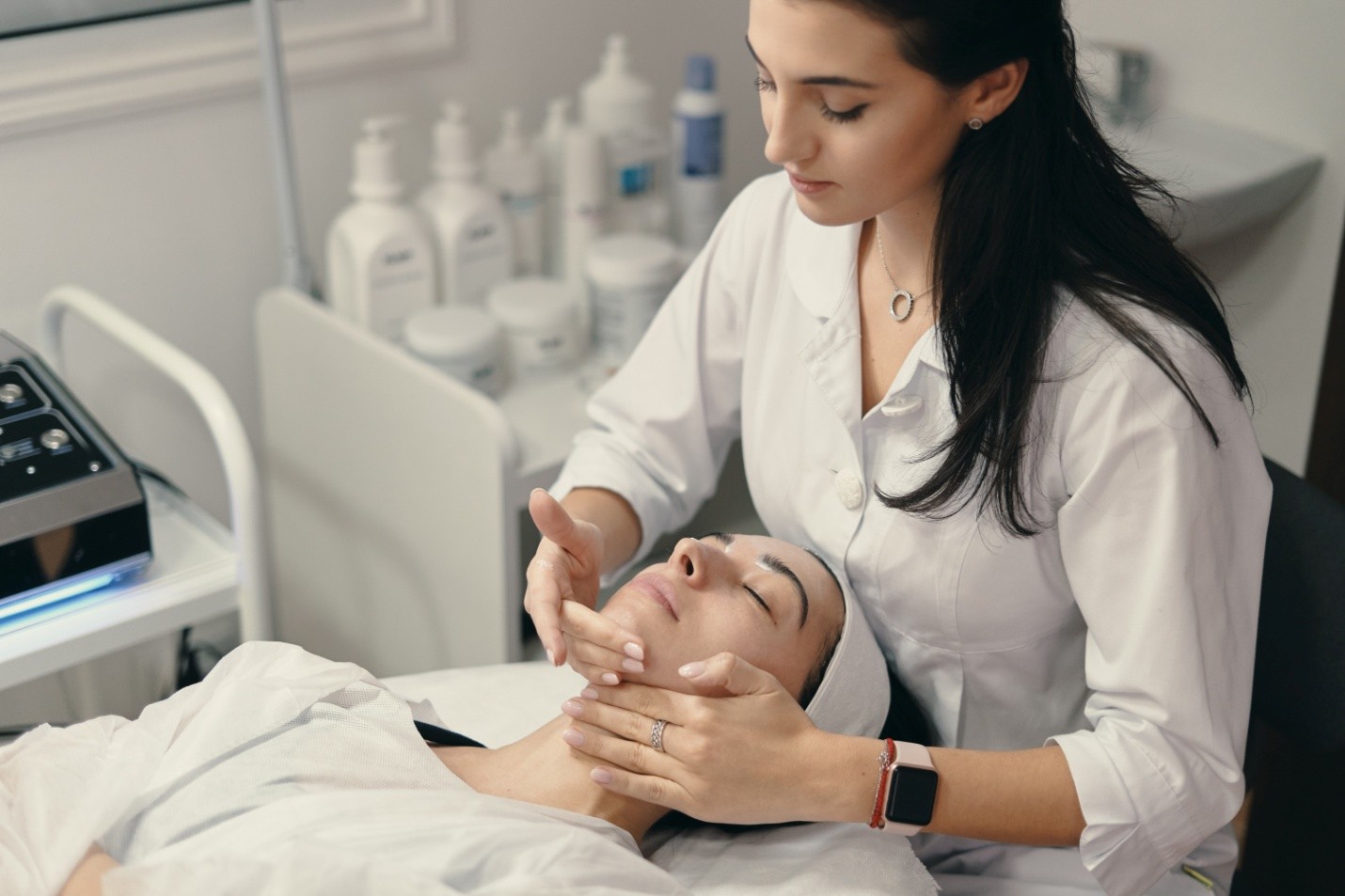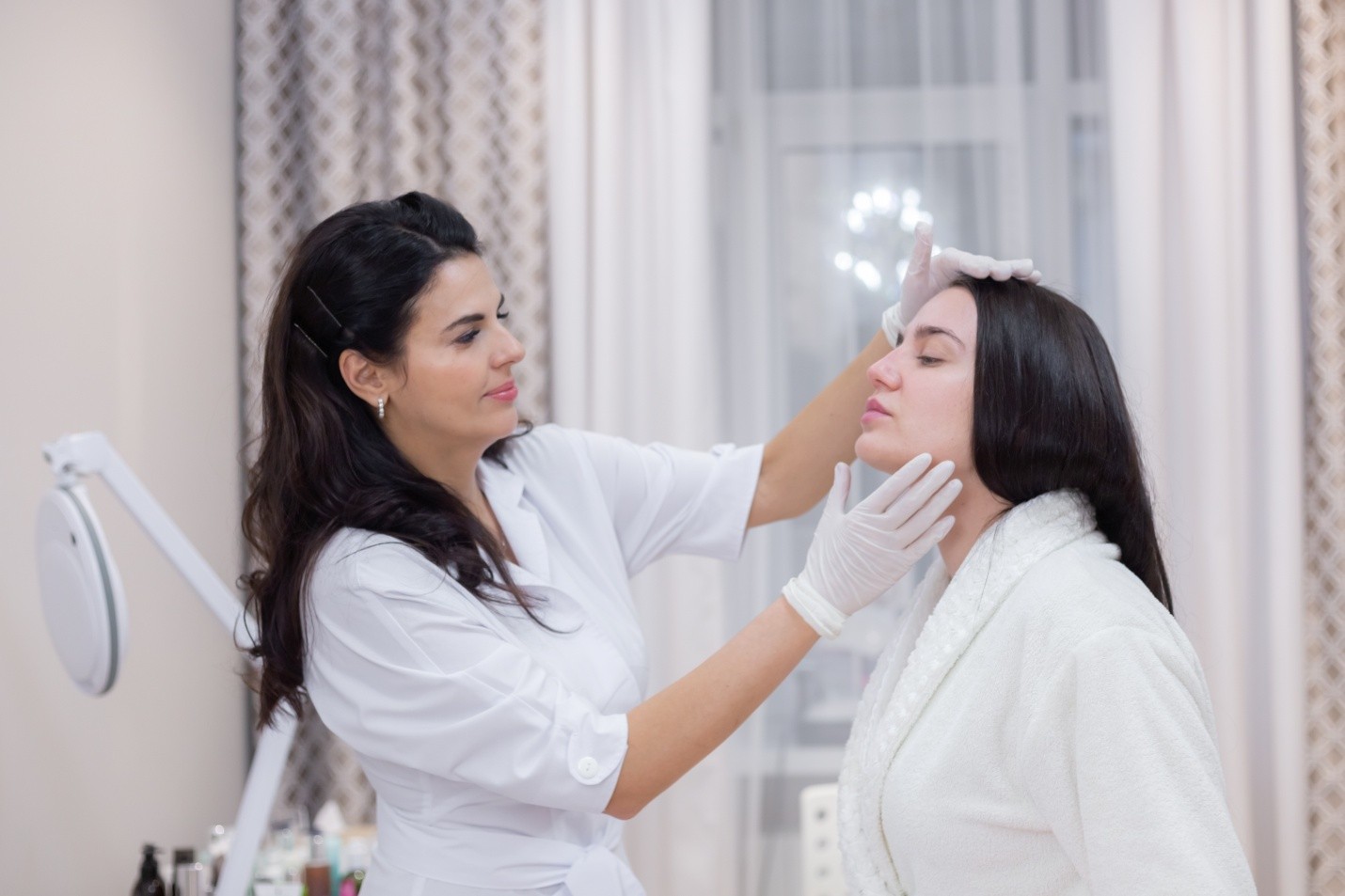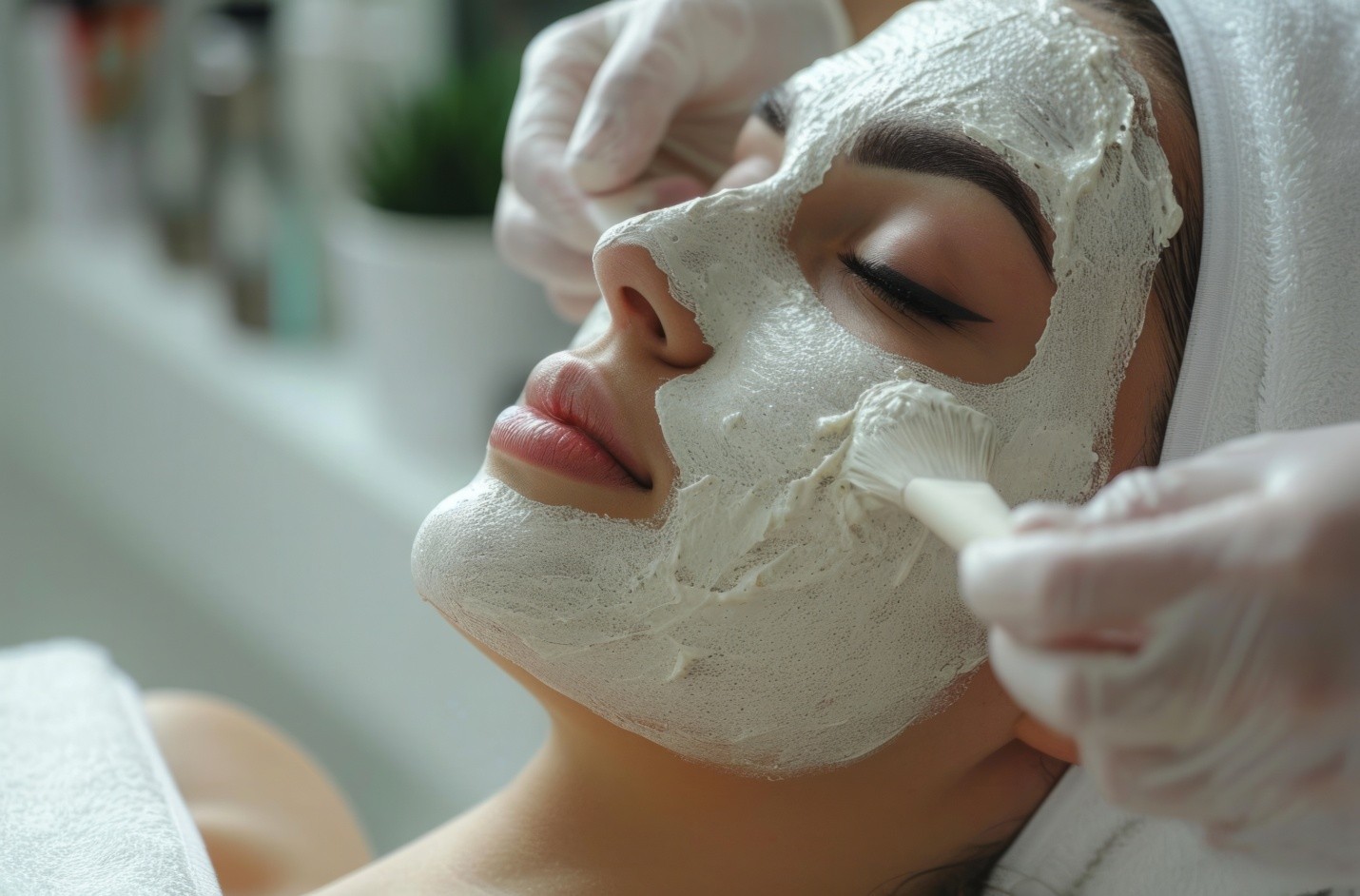What Is a Medical Facial? And Why Is It Different from a Spa Facial?
Unlike traditional spa facials that prioritize relaxation and pampering, medical facials take a more targeted and clinical approach. These treatments go beyond surface-level care to address specific skin concerns with precision and expertise.
Performed under the supervision of dermatologists or licensed aestheticians, medical facials are tailored to your skin’s unique needs. They are designed using clinical assessments and customized protocols to ensure effective and lasting results.
What sets medical facials apart is their use of prescription-strength ingredients, advanced techniques, and specialized devices. These include tools like LED therapy, microdermabrasion, and chemical peels, which help combat acne, hyperpigmentation, fine lines, and skin laxity at a deeper level.


What Sets Them Apart?
- Customized Treatments: Tailored to your skin’s condition and goals.
- Advanced Technology: May include chemical peels, LED light therapy, microneedling, oxygen infusion, or dermaplaning.
- Deeper Results: Targets the dermis (deeper skin layer) for long-term benefits.
- Real Solutions: Treats concerns like melasma, cystic acne, photoaging, and more.
Whether you're battling breakouts, trying to slow down aging, or simply want brighter skin, a medical facial delivers science-backed results you can see and feel.
Why Should You Consider a Medical Facial?
Let’s face it—your skin is constantly under attack. From UV rays and pollution to stress and hormonal imbalances, there’s a lot working against your natural glow. Medical facials work to:
- Deeply cleanse clogged pores
- Remove dead skin and toxins
- Stimulate collagen and elastin
- Rebalance hydration and oil
- Strengthen your skin barrier
- Restore radiance and even tone
One session can leave your skin noticeably brighter and smoother, but consistency is key to lasting results.
How Often Should You Get a Medical Facial?
Here’s the golden question—and the honest answer is: it depends. Let’s break it down based on your skin type, skin concerns, lifestyle, and seasonal needs.
Based on Skin Type
Oily or Acne-Prone Skin
If your skin produces excessive oil, is prone to breakouts, or develops blackheads and whiteheads regularly:
- Frequency: Every 2 to 4 weeks
- Why: Helps control oil production, reduce inflammation, and prevent clogged pores
Dry or Dehydrated Skin
When your skin feels tight, flaky, or irritated:
- Frequency: Every 4 to 6 weeks
- Why: Frequent facials can restore hydration and exfoliate dead skin gently without causing dryness
Combination Skin
If your skin is oily in the T-zone but dry elsewhere:
- Frequency: Every 4 weeks
- Why: Balances both oil control and hydration, focusing on multiple needs
Sensitive or Rosacea-Prone Skin
Prone to redness, irritation, or inflammation:
- Frequency: Every 6 to 8 weeks
- Why: Gentle facials focused on calming, soothing, and strengthening the skin barrier
Normal or Balanced Skin
Lucky enough to have well-behaved skin?
- Frequency: Every 4 to 6 weeks
- Why: Preventative care to maintain tone, texture, and glow
Based on Skin Concerns
Acne or Breakouts
Persistent acne or frequent breakouts can be treated more effectively with consistent facials:
- Frequency: Every 2 to 3 weeks until the condition improves
- Goal: Control oil, exfoliate, reduce scarring, and calm inflammation
Hyperpigmentation or Melasma
To fade dark spots, sun damage, or hormonal pigmentation:
- Frequency: Every 4 to 5 weeks with treatments like enzyme peels and vitamin C facials
- Goal: Gradual lightening with minimal irritation
Aging Skin & Fine Lines
To reduce wrinkles, sagging, and loss of firmness:
- Frequency: Every 4 to 6 weeks with collagen-boosting treatments
- Goal: Stimulate cellular renewal and plump the skin
Dull, Uneven Skin Tone
When your skin looks tired or lacks radiance:
- Frequency: Every 3 to 5 weeks
- Goal: Exfoliation and brightening to restore glow
Based on Lifestyle Factors
Your environment and habits can play a huge role in how your skin behaves.
Urban Pollution
Living in a city with high levels of air pollutants?
- Frequency: Every 3 to 4 weeks
- Goal: Detoxify and protect from environmental damage
Heavy Makeup Usage
Daily use of makeup, especially full-coverage products:
- Frequency: Every 4 weeks
- Goal: Prevent build-up, keep pores clean, and improve makeup application
High Stress or Hormonal Fluctuations
Stress or hormone changes can trigger breakouts and sensitivity:
- Frequency: Every 3 to 4 weeks
- Goal: Soothe the skin and restore balance
Active Lifestyle (Gym, Sweat, Travel)
Frequent sweating or changing climates?
- Frequency: Every 3 to 5 weeks
- Goal: Cleanse impurities, rebalance hydration, and prevent congestion
Top Benefits of Regular Medical Facials
Scheduling medical facials regularly is one of the smartest ways to improve your skin long-term. Here's what consistent treatments can do for you:
- Prevent Breakouts – By cleaning out pores and reducing inflammation
- Boost Hydration – Medical-grade serums help lock in moisture
- Improve Skin Texture – Smoother, tighter, and more even skin
- Brighten Complexion – Removes dull skin layers to reveal radiant glow
- Reverse Aging Signs – Stimulates collagen and smooths fine lines
- Strengthen Barrier – Improves resistance to pollutants and irritants
- Enhance Product Absorption – Prepares skin to absorb serums more effectively
- Reduce Scarring and Pigmentation – Evens tone over time with precision
What to Expect During a Medical Facial
Though each facial is customized, most include these steps:
- Consultation – A professional skin analysis and discussion of your concerns
- Deep Cleansing – Removes makeup, oil, and dirt
- Exfoliation – Through peels, scrubs, or devices like microdermabrasion
- Steam & Extraction – Clears clogged pores and blackheads
- Treatment Phase – Application of active ingredients or tools (LED light, peels)
- SPF Protection – Always the final step to guard your fresh skin
Aftercare: Maintaining Results Between Visits
Here’s how to keep your skin glowing between appointments:
- Use a gentle cleanser and non-comedogenic moisturizer
- Apply sunscreen daily (SPF 30 or higher)
- Avoid harsh exfoliants or active acids for 48–72 hours
- Stay hydrated and follow a balanced diet
- Avoid heavy makeup for at least 24 hours
- Stick to products recommended by your provider
When to Avoid a Medical Facial
There are times when you should delay or reschedule:
- Active sunburn or open wounds
- Recent injectable or laser treatments (within 7–10 days)
- Ongoing skin infections or cold sores
- Pregnancy (certain components may be contraindicated)
Always disclose your skin conditions, allergies, and medication to ensure safety and effectiveness.
Seasonal Skin Needs: Adjusting Your Schedule
Your skin doesn’t behave the same year-round. Consider these adjustments:
- Summer: Monthly facials to fight excess oil, sweat, and UV exposure
- Monsoon: Cleanse more often if skin feels sticky or congested
- Winter: Opt for facials with intense hydration and barrier repair every 6 weeks
- Spring/Fall: Rejuvenation facials to repair damage from seasonal transitions
Final Thoughts: Find Your Facial Frequency
Medical facials aren’t just a beauty trend—they’re a cornerstone of modern skincare. When customized and done regularly, they can dramatically improve your skin’s texture, clarity, and tone. The key is personalization and consistency.
For most people, a facial every 4 to 6 weeks is ideal. However, your skin will tell you what it needs—and working with a trusted skincare expert will ensure you listen the right way.

